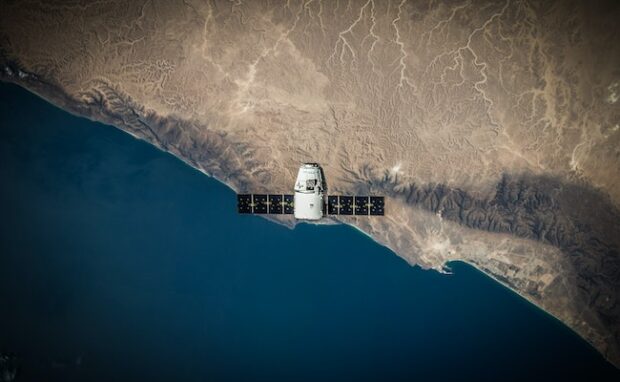AI stabilizes satellite internet connectivity
University of Waterloo researchers used artificial intelligence to determine potential problems with satellite internet systems. Peng Hu, Waterloo adjunct professor of computer science, and his team tested two other technologies to confirm their findings. They concluded this prevention ensures Canada’s remote areas maintain connectivity.
Technologies often build on top of one another to create new ones. Others enhance existing gadgets and apps like satellite internet in Canada. Soon, this technology could improve connectivity in other countries. You might enjoy this upgrade in your area in the coming years, so learn now how it works.
This article will discuss how researchers developed their AI satellite internet solution. Later, I will cover an emerging form of internet service built by Google and NASA.
How does the AI satellite internet work?
The University of Waterloo website explained the problem the AI satellite internet solved. It said rural Canadian communities depend on satellites to access the Internet.
Their connectivity is unreliable due to frequent glitches and service interruptions. Consequently, they usually have a worse experience than city people.
That service inequality is severely detrimental to Canada’s economic productivity. That is why Peng Hu and a few National Research Council experts tackled this issue with machine learning.
They created an AI method called the Multivariate Variance-based Genetic Ensemble Learning Method. It merges multiple existing AI-driven models to identify satellite and satellite network issues before they grow into major problems.
“For remote areas in Canada and around the world, satellites are often their best option for maintaining internet access,” said Peng Hu. “The problem is that the operation of those satellites can be expensive and time-consuming, and issues with them can lead to populations being cut off from the rest of the world.”
They conducted the project at the NRC-Waterloo Collaboration Center. Also, Yeying Zhu, an associate professor of statistics, helped Hu’s team. They tested their method with three datasets:
You may also like: How does satellite internet work?
- Soil Moisture Active Passive: NASA satellite monitoring soil moisture across the Earth
- Mars Science Laboratory rover: satellite data from the Mars rover
- Server Machine Dataset: data from a large Internet provider
The University of Waterloo website explained the researchers picked these datasets because they are publicly available. Moreover, they represent various satellite use cases.
Hu and his colleagues discovered their new model outperformed others in recall, accuracy, and precision. “Satellite network systems are going to be more and more important in the future,” Hu said. “This research will help us to design more reliable, resilient, and secure satellite systems.”
Is there another emerging Internet technology?
Google has been testing another type of Internet connectivity before this AI internet solution. Its innovation hub, X-lab, has tested laser internet in remote areas.
Modern Internet connectivity relies on fiber-optic cables that carry information using light. Consequently, the hub thought, “What if we leapfrogged to the optical spectrum and unlocked 30 times more data capacity?”
That inspired the creation of Project Taara, which “uses light to transmit information at super high speeds through the air as a very narrow invisible beam.” General Manager Mahesh Krishnaswamy explained, “This is as simple as a digital camera with a laser pointer.”
A transmitter fires a laser containing data to the receiver’s “camera” so the latter can decode and turn them into bytes. The innovation hub says its system works with existing radio and fiber infrastructure.
It works in areas cable internet cannot reach, such as forested regions, railway tracks, urban areas, and bodies of water. Also, NASA is testing a similar technology in outer space.
You may also like: China creates laser that can fire indefinitely
It comprises the Laser Communications Relay Demonstration and the LCRD Low Earth Orbit User Modern and Amplifier Terminal (iLLUMA-T). NASA will dock the ILLUMA-T on the International Space Station.
“Once ILLUMA-T is on the space station, the terminal will send high-resolution data, including pictures and videos, to LCRD at a rate of 1.2 gigabits-per-second,” Matt Magsamen, deputy project manager for ILLUMA-T, explained.
“Then, the data will be sent from LCRD to ground stations in Hawaii and California. This demonstration will show how laser communication can benefit missions in low Earth orbit.”
Conclusion
University of Waterloo researchers developed an AI solution for satellite internet services. It detects problems before they worsen and interfere with connectivity.
Believe it or not, the Philippines has a similar technology for its mobile applications. It partnered with Mozark to deploy Consumer Application Monitoring Systems.
CAMS checks mobile apps for problems to ensure Filipinos can rely on them. Learn more about that technology and other digital trends at Inquirer Tech.

